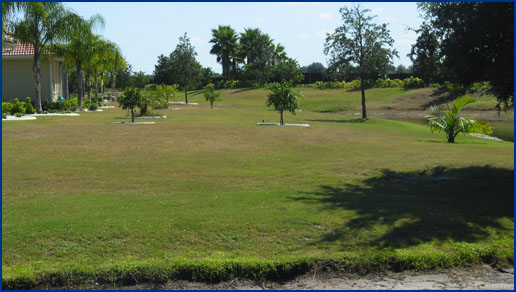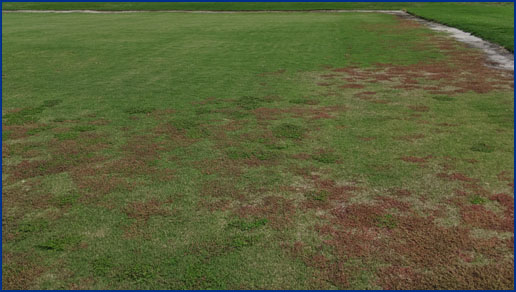Collecting nematode samples from a lawn or athletic field
A nematode sample should consist of multiple soil cores. Nematodes are not evenly distributed in soil, but their numbers may be high at one spot and low just a few feet way. By collecting multiple cores with a device such as a “T” type soil sample tube, an average population density can be measured. A good rule of thumb is to have 12–16 cores per area lawn or field. Cores should be taken to a depth of 4 inches. If you do not have a soil sampling device you can use a shovel or trowel to collect soil from a number of areas. Put the soil into a bucket, mix it up, and then put a couple cupfulls into a plastic bag.

If damage is evident, then sample near the margin of the affected area(s). Nematode populations will decline in severely damaged areas because they have nothing left to eat. Therefore, populations tend to be highest near the edges of a declining area where the grass is still alive. If damage is occurring in multiple areas of a field, take a few cores from the border of several affected areas to make the 12–16 cores. When taking samples from turf that is not showing symptoms, or if sampling before planting, sample in a “zig-zag” pattern across the area.
Put the soil from each lawn into a separate plastic bag and seal it. Nematodes require moisture to survive, so drying the soil will kill them. This is different than submitting a sample for nutrient analysis where dry soil is preferred. Make sure that each bag is labeled with a permanent marker so that the diagnosis can be assigned to the correct area. If using a self-sealing bag, seal it with tape also because the zippers often come open in transit.

Handle samples carefully. Do not expose samples to direct sunlight or heat. Nematodes are sensitive to high temperatures and UV light. Leaving samples on the dashboard or in the back of a pickup truck can kill them quickly and reduce the accuracy of the diagnosis. Keeping the nematode sample in a cooler is best. The nematodes will be sandwiched between soil particles so rough handling might destroy them. Pack the samples well to minimized shifting during shipping.
Submit the sample right away. Next day delivery is best. One study found greatest nematode recovery from hand-delivered samples, the next highest from next-day delivery, and the lowest from regular postal delivery.

